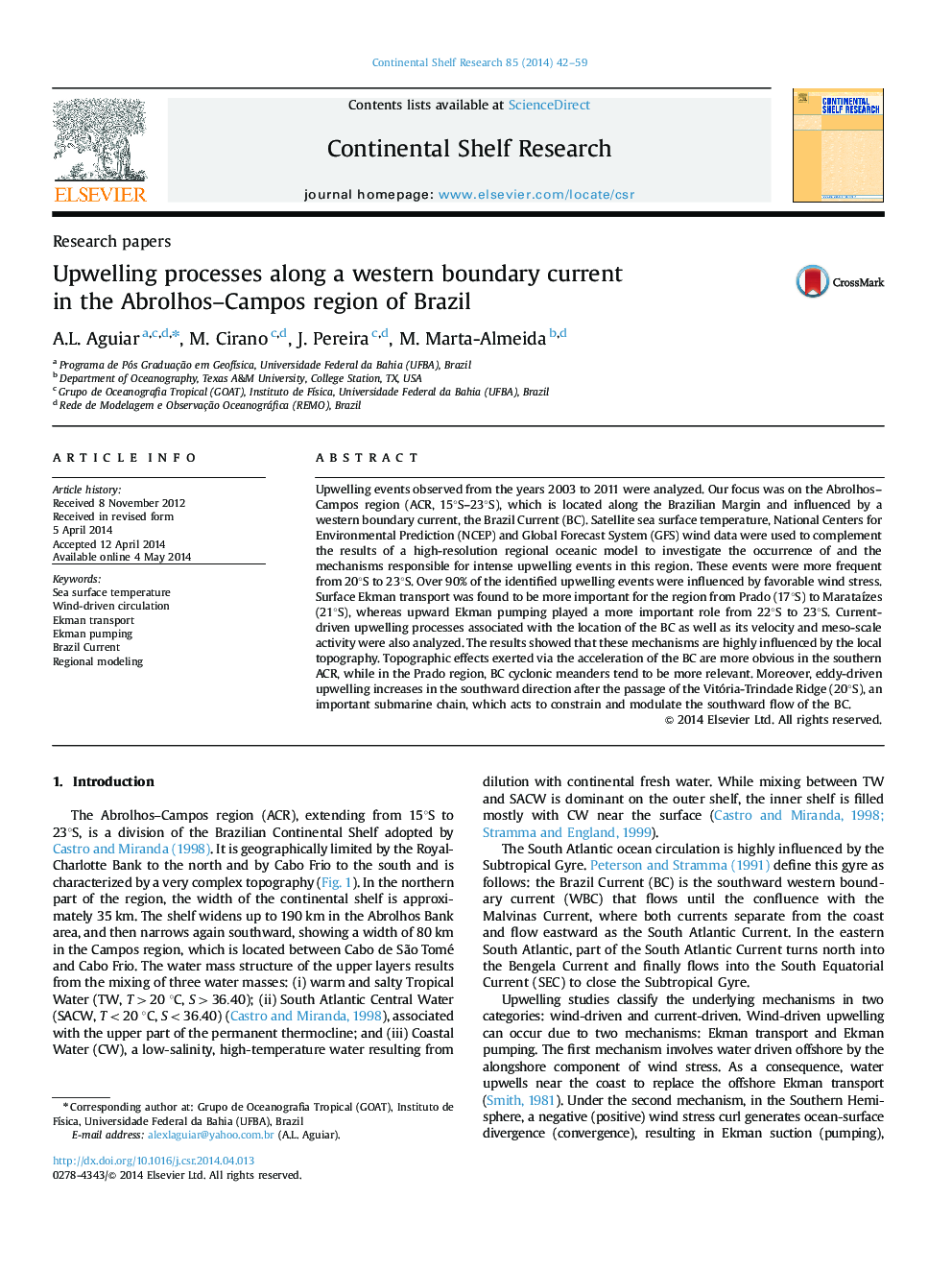| Article ID | Journal | Published Year | Pages | File Type |
|---|---|---|---|---|
| 4531862 | Continental Shelf Research | 2014 | 18 Pages |
•Upwelling events were more frequent from 20°S to 23°S•The Ekman transport was found to be more important for the region from 17°S to 21°S•Ekman pumping had a more important role from 22°S to 23°S region•Topographic effects, via the BC acceleration, are more noticeable in southern ACR.
Upwelling events observed from the years 2003 to 2011 were analyzed. Our focus was on the Abrolhos–Campos region (ACR, 15°S–23°S), which is located along the Brazilian Margin and influenced by a western boundary current, the Brazil Current (BC). Satellite sea surface temperature, National Centers for Environmental Prediction (NCEP) and Global Forecast System (GFS) wind data were used to complement the results of a high-resolution regional oceanic model to investigate the occurrence of and the mechanisms responsible for intense upwelling events in this region. These events were more frequent from 20°S to 23°S. Over 90% of the identified upwelling events were influenced by favorable wind stress. Surface Ekman transport was found to be more important for the region from Prado (17°S) to Marataízes (21°S), whereas upward Ekman pumping played a more important role from 22°S to 23°S. Current-driven upwelling processes associated with the location of the BC as well as its velocity and meso-scale activity were also analyzed. The results showed that these mechanisms are highly influenced by the local topography. Topographic effects exerted via the acceleration of the BC are more obvious in the southern ACR, while in the Prado region, BC cyclonic meanders tend to be more relevant. Moreover, eddy-driven upwelling increases in the southward direction after the passage of the Vitória-Trindade Ridge (20°S), an important submarine chain, which acts to constrain and modulate the southward flow of the BC.
